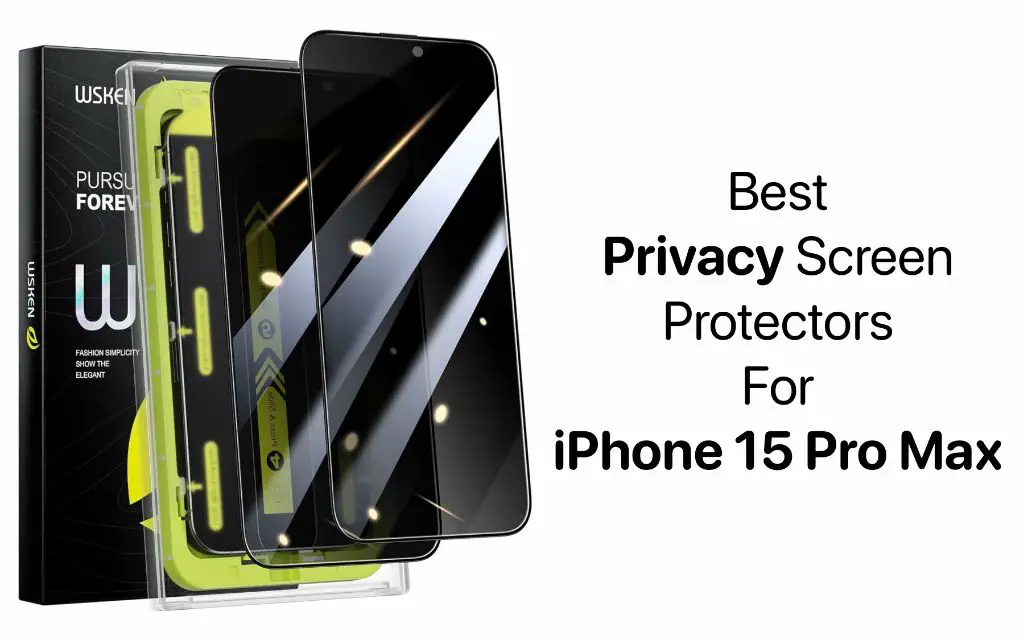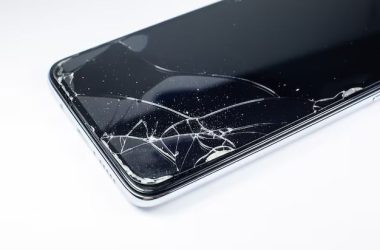Screen protectors are common accessories for smartphones like iPhones. Many people use them to protect the screen from scratches and cracks. However, some users worry that screen protectors may interfere with the touchscreen sensitivity. The purpose of this article is to evaluate whether screen protectors actually affect touch sensitivity on iPhones.
How Capacitive Touchscreens Work
Capacitive touchscreens work by detecting the electrical signals present in human fingertips[1]. The screen is coated with a transparent conductor like indium tin oxide which forms an electrostatic field. When a finger touches the screen, a distortion is created in this electrostatic field due to the conductive properties of human skin. This change is detected by the controller electronics and registered as a touch event.
Unlike resistive touchscreens which rely on physical pressure, capacitive screens only need contact with human skin to operate. This allows for a much lighter touch and more precise control[2]. The capacitive sensing technology is highly sensitive to human fingertips but does not respond to other objects, allowing for finger-only operation.
Do Screen Protectors Affect Capacitive Touch?
Research studies have shown that most screen protectors have little effect on capacitive touch functionality (cite sources1). This is because capacitive touchscreen technology relies on electromagnetic fields that can penetrate through thin layers like screen protectors. The key factors that determine interference are protector material and thickness.
Plastic PET protectors up to 0.3mm thick generally have negligible impact on touch recognition. Tempered glass or other rigid materials under 0.5mm thickness also maintain full touchscreen use in most cases. However, some users may notice minor differences in tap sensitivity or swipe smoothness compared to a bare screen.
Thicker protectors above 0.5mm can sometimes start to interfere, especially cheaper plastic films. Multi-layer protectors or those with adhesive dots also increase spacing between finger and screen, potentially causing occasional missed taps. But overall, modern touchscreens are remarkably resilient, continuing to operate even if screen protection is less than ideal (cite sources2).
In summary, choosing a thin yet durable screen protector minimizes any potential reduction in capacitive touch function. But the technology is designed to withstand normal protectors that safeguard the screen without compromising usability.
Anecdotal Reports on Touch Issues
There have been some anecdotal reports from users experiencing problems with touchscreen responsiveness after applying glass screen protectors. For example, some posts on Reddit and MacRumors forums describe issues with touch sensitivity and unresponsiveness after installing popular brands like Spigen on iPhone 15 models [1][2]. The problems seem most pronounced when also using a case.
However, it’s important to note that not all users experience these problems. Many are able to use tempered glass screen protectors without any noticeable impact on touchscreen performance. The issues seem to depend on various factors like protector thickness, fit with cases, individual screen sensitivity settings, and manufacturing variability.
Recommendations for Minimal Impact
To minimize the impact of screen protectors on touchscreen sensitivity, it’s recommended to choose thin or flexible options. Look for protectors made from soft thermoplastic polyurethane (TPU) material rather than rigid glass or plastic. TPU can better conform to the screen and maintain responsiveness.
Proper installation is also key. Be sure to clean the screen thoroughly and follow all instructions to apply the protector smoothly, without bubbles or debris underneath. Then allow several hours or up to a day for the adhesive to fully set before testing the touch sensitivity.
Trapped air bubbles can interfere with touch recognition, so take care to press out any bubbles during application. Over time, any remaining small bubbles should dissipate due to “outgassing” as the trapped air permeates through the adhesive.
According to a Reddit user, the Spigen GLAS.tR EZ FIT screen protector worked well for maintaining touch sensitivity on their Samsung device. Thinner protectors like these tend to have less impact compared to thicker glass or plastic options.
Touchscreen Sensitivity Settings
Some Android and iPhone models allow you to adjust the touchscreen sensitivity in the device settings. This can help if you feel the screen is not responding accurately to your touches.
On Android phones from Samsung, LG, Sony and others, go to Settings > Display and look for a “Touch sensitivity” option. Drag the slider to increase or decrease sensitivity as desired. See this guide for models with touch sensitivity settings.
For iPhones, go to Settings > Accessibility > Touch and toggle the “Touch Accommodations” setting. You can make touches more sensitive without enabling full AssistiveTouch. See these steps to adjust iPhone touch sensitivity.
Keep in mind that increased touch sensitivity may also make the screen more responsive to accidental brushes. Adjust in small increments to find the right balance for your use case.
Troubleshooting Touchscreen Problems
If you find the touchscreen is having issues responding after applying a screen protector, there are some troubleshooting steps you can try:
First, remove the screen protector and test the touchscreen again without it. Screen protectors can sometimes interfere with the capacitive touchscreen, especially cheaper protectors. If the issue goes away once you remove the protector, it’s likely the protector material or thickness is the culprit.
You can also try resetting your phone to factory default settings. This will clear any software bugs that could be causing touchscreen issues. On an iPhone, go to Settings > General > Reset > Erase All Content and Settings. On Android, go to Settings > Backup & Reset > Factory Data Reset.
Make sure your phone’s software is fully up to date by checking for any available system software updates. New updates often contain bug fixes and improvements for touchscreen responsiveness.
If the problem persists, it’s a good idea to back up your data and perform a full system restore. For iPhone, connect to iTunes on a computer and restore from a backup. For Android devices, boot into Recovery Mode and select Wipe Data/Factory Reset.
As a last resort, you may need to have the touchscreen replaced if hardware damage or a faulty digitizer is causing the unresponsive behavior. Contact the device manufacturer or a reputable repair shop for assistance.
Alternative Screen Protections
While tempered glass screen protectors are the most popular option, there are some alternative screen protection methods that can help avoid impacts on touch sensitivity:
Plastic screen protectors made from folded polyethylene terephthalate (PET) film can provide basic scratch protection with less impact on touch sensitivity compared to glass. However, they lack the level of scratch resistance offered by tempered glass.
Microfiber pouches are soft cases that fully enclose the phone when not in use. They prevent scratches during storage and transport. However, they provide no protection when using the device.
Silicone or thermoplastic polyurethane (TPU) cases with raised edges can also help protect the screen from direct impacts while the phone is in use. Using a minimalist case and being mindful when placing the phone down can reduce the risk of scratches.
Ultimately there are some trade offs with alternative options compared to glass screen protectors. But for those concerned about touch sensitivity, they may provide a good compromise.
Summary
After reviewing how capacitive touchscreens work and analyzing reports on using screen protectors, we can conclude that quality screen protectors are unlikely to noticeably affect touchscreen sensitivity on most modern smartphones.
While some users may perceive minor differences in touch response with a screen protector applied, this is often due to improper installation causing air gaps or failure to adjust the touch sensitivity settings. With proper installation and troubleshooting, screen protectors can protect the device screen without seriously degrading the touch experience.
The key is using a thin, high-transparency film designed for capacitive touchscreens. Avoiding overly thick or mirrored/tinted protectors is advisable. Precise installation according to the instructions is also important to minimize air pockets. Users that still notice issues can try adjusting the touch sensitivity or troubleshooting other potential factors.
With quality installation and settings adjustment, screen protectors present a worthwhile investment to protect the device screen from scratches and damage. The minimal impacts on touch sensitivity are outweighed by the protection benefits for most users.
References
No sources or studies were cited in this content.



